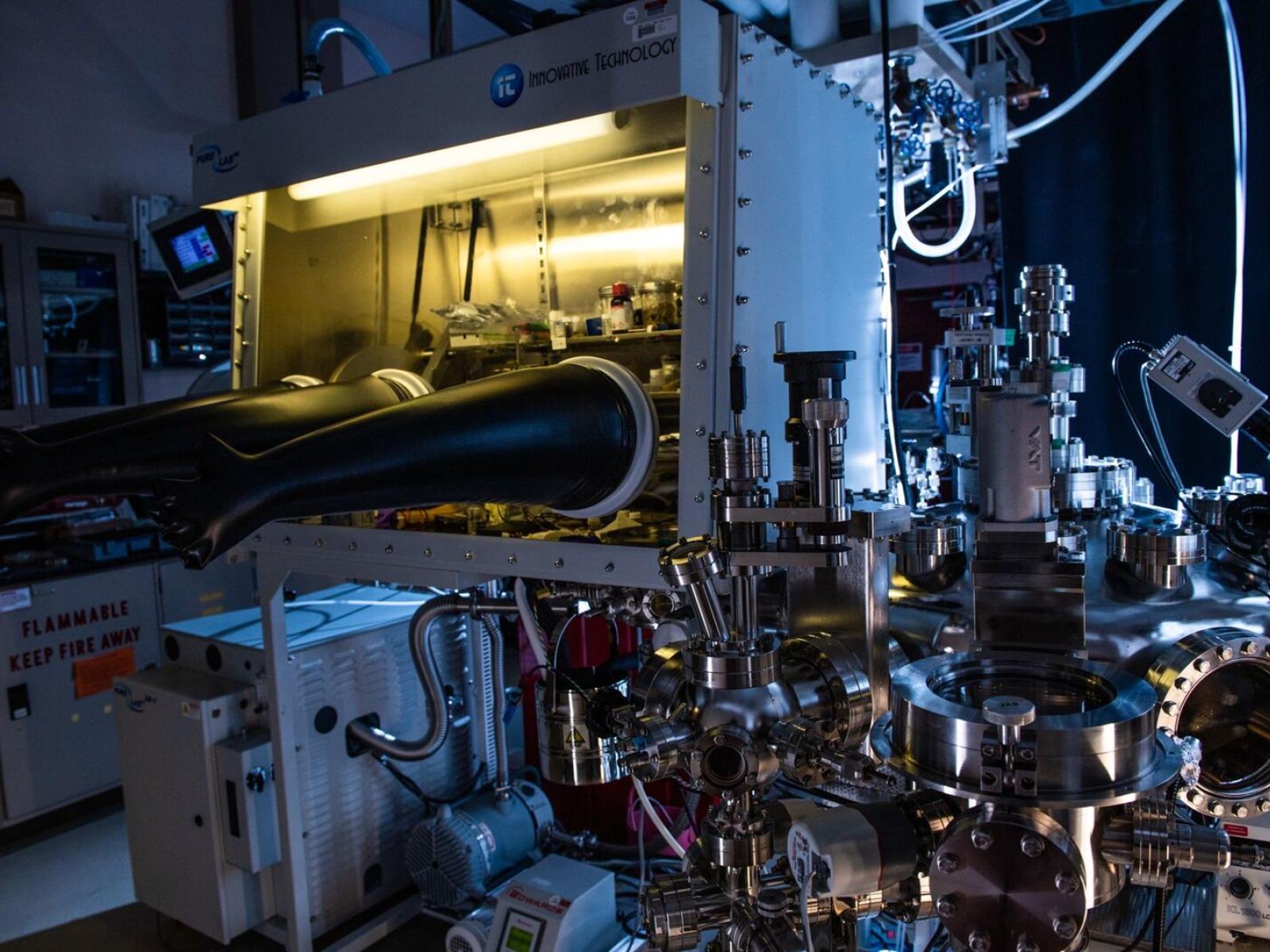Developing Collaborations through EPSCoR
Current and new projects bring researchers together to study materials

Combining instrumental capabilities and knowledge bases enhances collaborative research projects.
(Photograph by Andrea Starr | Pacific Northwest National Laboratory)
Materials are essential for a wide range of energy applications. To better understand new and existing materials, Pacific Northwest National Laboratory (PNNL) scientists are collaborating with universities across the country through the Department of Energy's Established Program to Stimulate Competitive Research (DOE EPSCoR).
A project funded in 2020 brought PNNL physicist Vijay Murugesan and Oklahoma State University (OSU) professor Ömer Özgür Çapraz together. Their project, focused on next-generation sodium and potassium-based batteries, leverages unique capabilities at PNNL and OSU to understand how battery materials change physically and chemically.
When batteries charge and discharge, positively charged atoms, known as cations, go in and out of materials. As sodium and potassium cations are larger than lithium, they can cause greater physical and chemical changes in materials.
Çapraz and his team have a system that allows them to measure how the physical structure of the battery material changes in real-time. Murugesan and the PNNL team are known for in-depth studies on changes in the chemical structure of battery materials. By studying the same materials from two perspectives, the collaborative team has been able to create a richer picture of energy storage processes.
The collaboration between Murugesan and Çapraz has already led to three publications. Their latest publication examines the chemical and mechanical changes that happen in lithium iron phosphate and sodium iron phosphate materials. They found that the sodium system had much more irreversible strain than the lithium system. Charging the materials faster created different chemical structures, including some that are only stable for brief periods of time.
EPSCoR collaborations also create opportunities to visit across collaborating institutions. Murugesan recently gave an in-person seminar at OSU, meeting his colleagues and seeing their instrumentation. Murugesan also hosted an OSU student at PNNL, who learned how to use PNNL’s advanced materials characterization instruments.
“Hosting a student was particularly fulfilling,” said Murugesan. “EPSCoR provides opportunities for students to broaden their skill sets and networks beyond their home institutions.”
Two PNNL scientists will embark on new EPSCoR collaborations this year. Chemical engineer Xin Zhang will work with Eastern New Mexico University professor Juchao Yan on a project titled “Use of carbonyl as an infrared reporter for probing the nature of charges in donor-acceptor type conjugated molecules.” Materials scientist Steven Spurgeon will work with Auburn University associate professor and former PNNL Linus Pauling Fellow Ryan Comes on a project titled “In situ studies of charge transfer phenomena in complex oxide heterostructures.” These collaborative efforts will enhance research at the partner institutions and broaden the impact of PNNL research across the nation.
Published: December 2, 2022